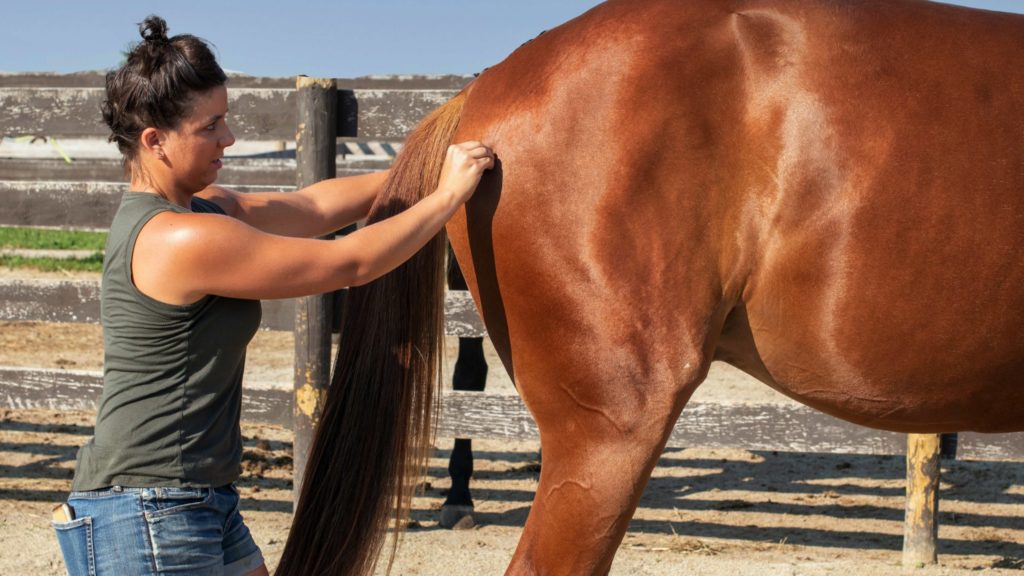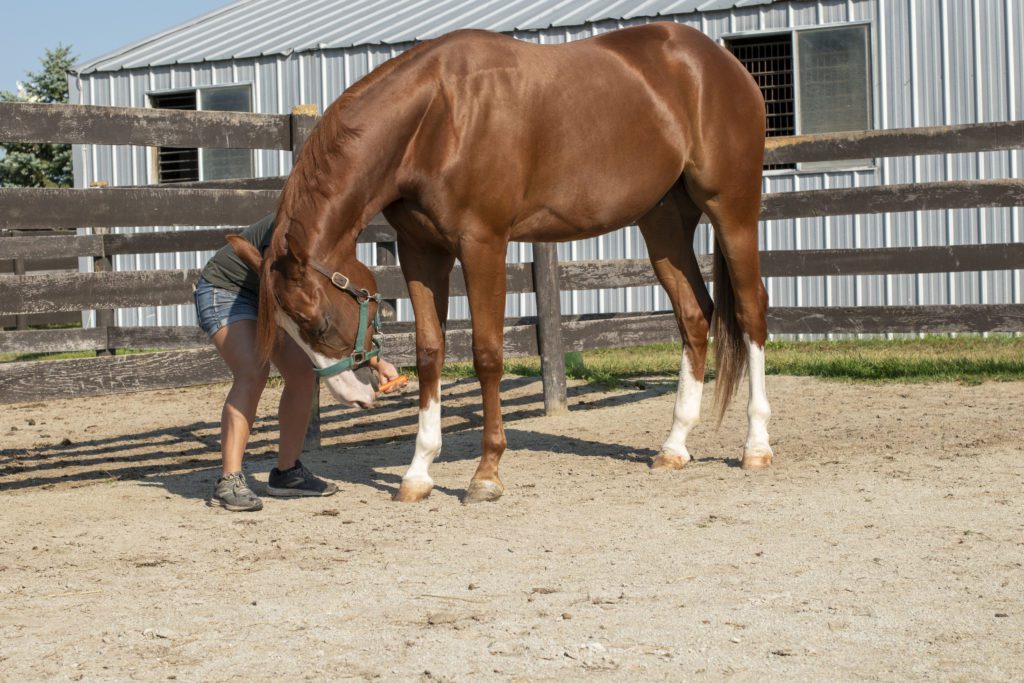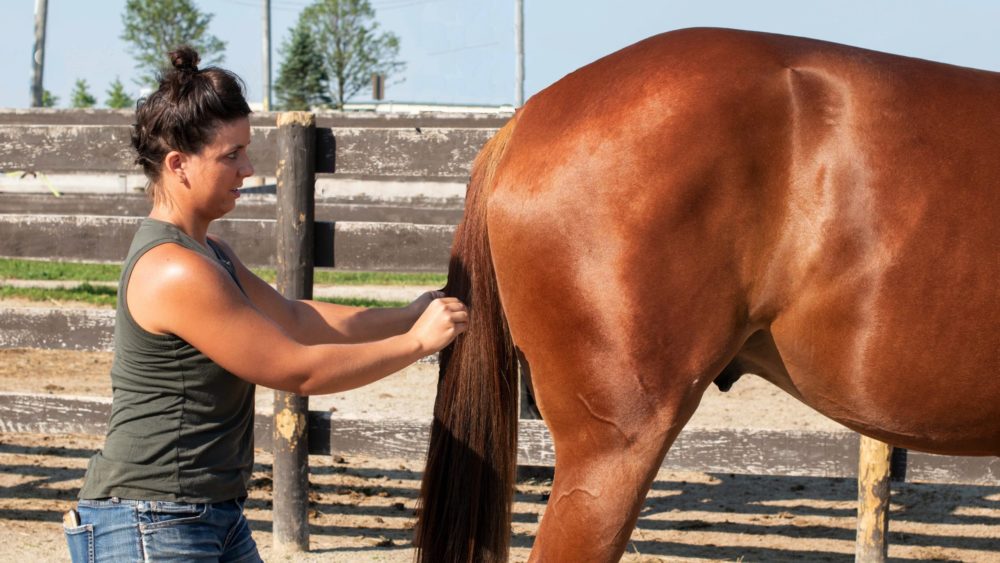One of the essential aspects of working with a performance horse is teaching your horse collection at the canter. For some horses, this comes relatively easy. For others, it seems nearly impossible.
While it may be a training issue for some, quite a few horses cannot collect themselves due to a physical limitation. Many of these horses end up with tight hamstrings and weak glutes.
Let’s explore what is needed for collection and why some horses are physically limited.
Spine and Collection
When we ask our horse for collection, we are asking for hind end engagement. We want him to get his back end underneath himself and push off rather than pulling with the front end. It seems pretty simple, right? However, many people don’t realize the spinal involvement that takes place for collection to occur.
For collection to be performed, the lumbar spine must be able to flex. In other words, the low back must become rounded. This becomes the issue for many horses. When these joints have lost the ability to flex and extend, they are restricted.
If your horse has restrictions in his low back, he is physically unable to round his low back, prohibiting him from reaching collection at the canter. As a result, compensations form and can cause soreness in other body areas such as the pelvis, hocks, and stifles.
Tight Hamstrings and Weak Gluteal Muscles
 The low back, hamstrings, and gluteal muscles all work together for collection to occur. When the low back becomes restricted and cannot physically do its job, we are left with only two pieces of the puzzle. Eventually, this leads to changes in your horse’s hamstring and gluteal muscles.
The low back, hamstrings, and gluteal muscles all work together for collection to occur. When the low back becomes restricted and cannot physically do its job, we are left with only two pieces of the puzzle. Eventually, this leads to changes in your horse’s hamstring and gluteal muscles.
The hamstrings end up taking on the brunt of the load, and as a result, they can become large, spasmed, and painful. In addition, the glutes no longer work as they should, and as a result, they eventually atrophy or deteriorate.
Now, we are left with a horse that has a low back unable to flex, overworked hamstrings, and underworked glutes. This horse is truly unable to collect himself, no matter the type or amount of training put in. This can also lead to front-end lameness due to compensation.
Fixing the Root Cause
The goal is always to fix the root cause, rather than mask the symptoms. In this case, it is the lack of movement in the lumbar spine. The best way to increase joint range of motion is to have your horse adjusted. Chiropractic adjustments relieve restrictions that have formed in the spine and also take care of compensations that have developed along the way.
Adjustments increase joint range of motion allowing the horse to flex its low back. Once the low back is relieved of restrictions, the horse can begin rehab exercises to encourage lumbar spine flexion and build up the gluteal muscles. If we start rehab before the restrictions have been adjusted, it will only further irritate the issue.
Rehab Exercises
 By the time you notice physical changes occurring in the hamstrings and glutes, the problem has most likely been there for quite a while. Unfortunately, this means it is going to take some time to get your horse back on track. While not all horses are recommended the same rehab, a couple of exercises can significantly benefit horses with this low back issue.
By the time you notice physical changes occurring in the hamstrings and glutes, the problem has most likely been there for quite a while. Unfortunately, this means it is going to take some time to get your horse back on track. While not all horses are recommended the same rehab, a couple of exercises can significantly benefit horses with this low back issue.
Stretching is a great way to help improve your horse’s low back — have your horse stretch their nose to their flank on both sides and lower their head, and slightly tuck in their chin. Of course, carrots or other treats can be used to provide motivation.
 Horses should never be forced into these positions, and stretching should never be done on cold muscles as both of these can lead to muscle injury. However, butt tucks (the motion horses make when cold water is accidentally hosed on their rear end) are a great exercise to encourage low back flexion.
Horses should never be forced into these positions, and stretching should never be done on cold muscles as both of these can lead to muscle injury. However, butt tucks (the motion horses make when cold water is accidentally hosed on their rear end) are a great exercise to encourage low back flexion.
Chiropractic care will allow your horse to flex its low back once again. Stretching and butt tucks will help encourage your horse to keep flexing his low back. Once this is achieved and your horse can collect himself at the canter, he will naturally rebuild his gluteal muscles and relax his hamstrings.









